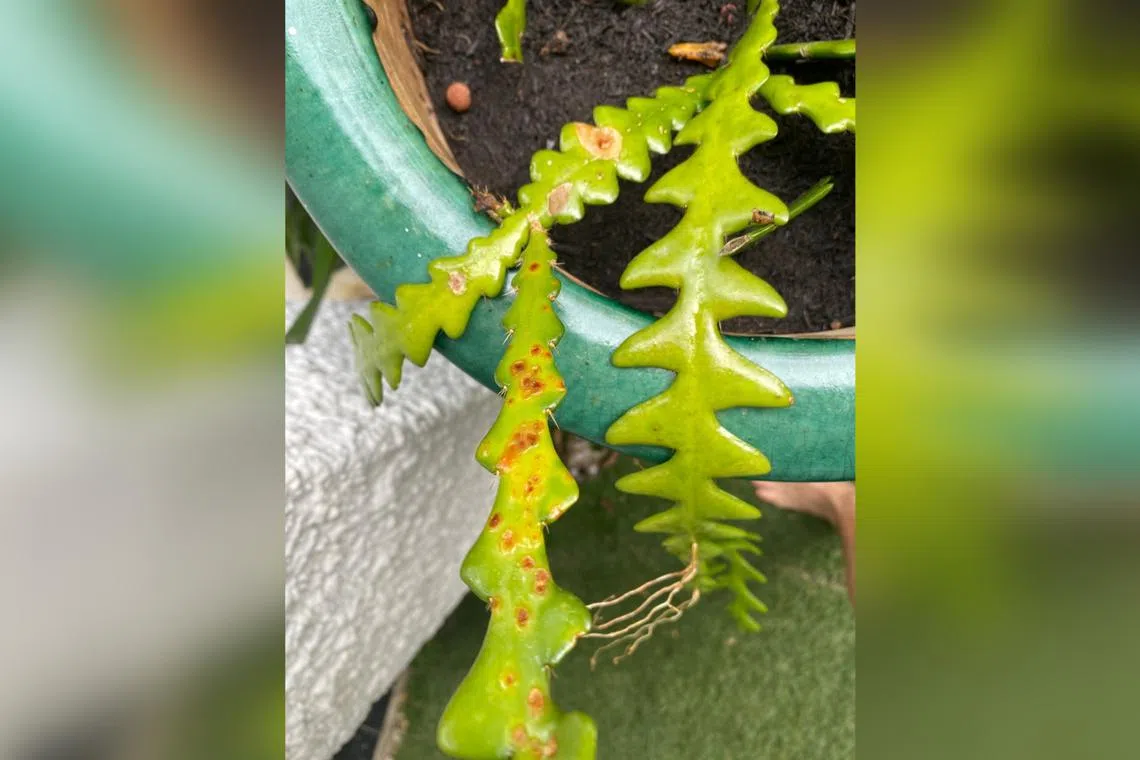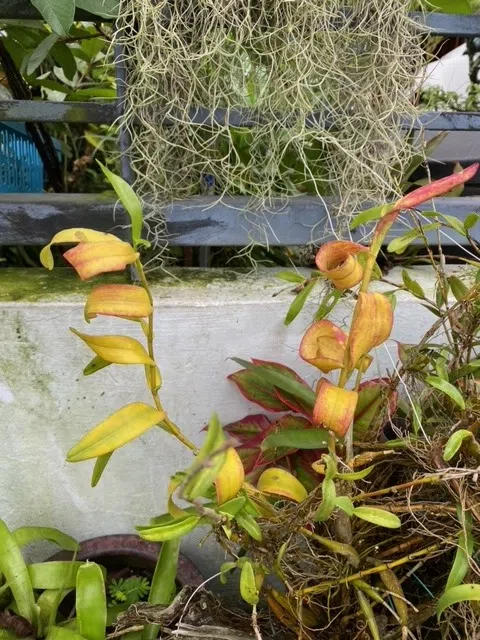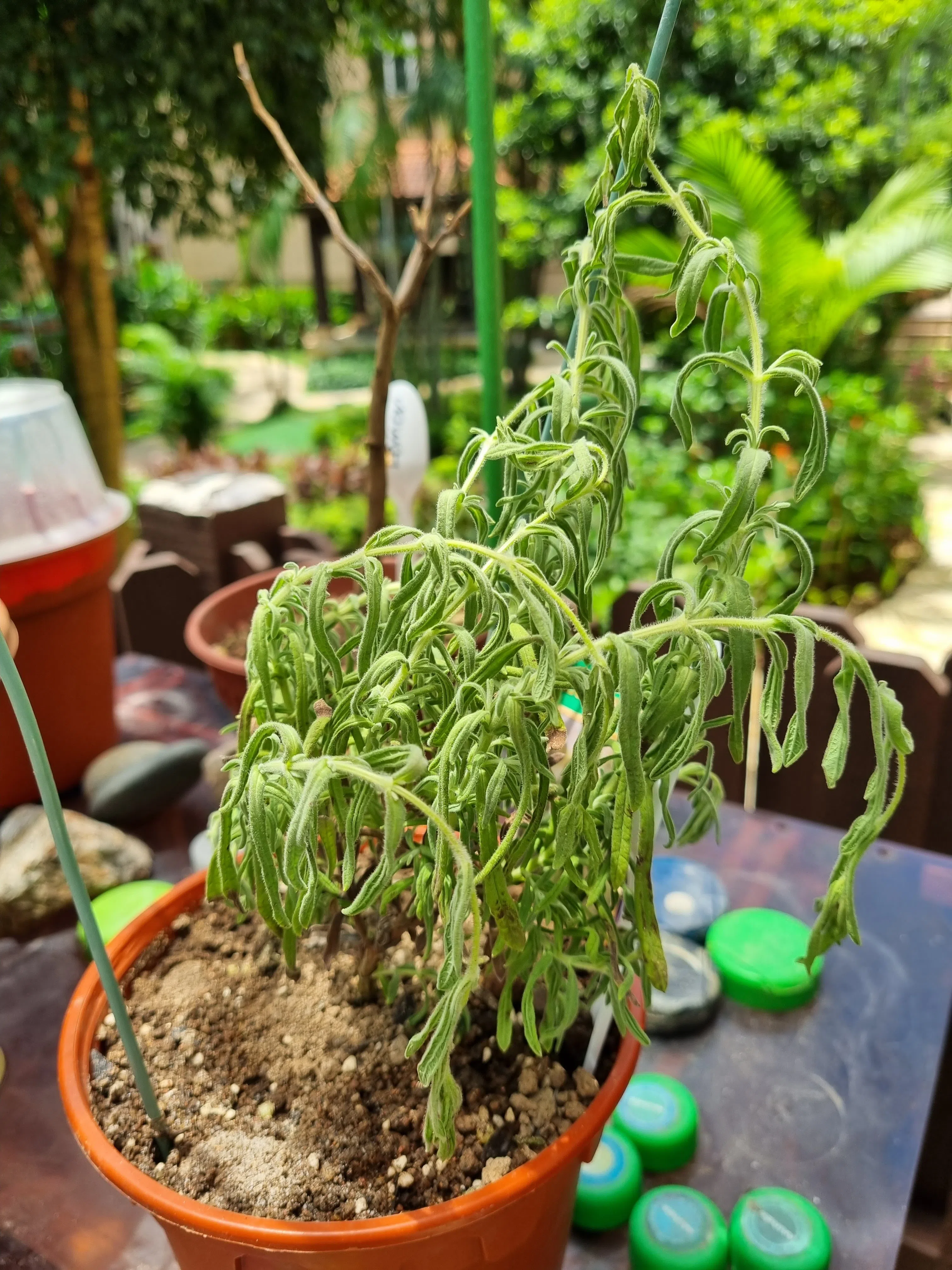Root Awakening: Epiphyllum plant has spotty leaves
Sign up now: Get ST's newsletters delivered to your inbox

The spots on the Epiphyllum plant may be due to intumescence.
PHOTO: THERESA CHOY
Wilson Wong
Follow topic:
Epiphyllum may have physiological disorder
The leaves of my Epiphyllum plant look infected. I have sprayed the infected leaves with different types of fungicide and insecticide, but none of them worked. What should I do?
Theresa Choy
The spots on your Epiphyllum plant may be due to intumescence – swelling as a result of excessive soil moisture and retarded transpiration. Parts of the leaf tissue have collapsed, leading to the appearance of brown spots.
This can occur during the rainy season due to high rainfall, a soaked root zone and high environmental humidity. Grow your plant under a clear shelter, so it does not suffer from wet feet and gets sufficient air circulation.
Fiddlewood tree produces scented flowers

The Fiddlewood is a source of timber used to make sounding boards for musical instruments and cabinets.
PHOTO: ABHIJIT DAS
This tree bears white flowers with a mild fragrance. What is it?
Abhijit Das
The tree is the Fiddlewood, botanically known as Citharexylum spinosum. It can grow between 6m and 15m tall, and its leaves can turn orange. It produces scented white flowers, and is a source of timber used to make sounding boards for musical instruments and cabinets.
Papaya fruit may have a fungal disease

Papaya must be grown in a sunny spot with good air circulation.
PHOTO: CHEE JAU CHNAN
Whenever I harvest my ripe papaya, the fruit always seem to have some rotten parts. What is wrong?
Chee Jau Chnan
Your papaya may have been infected with a fungal disease, which can occur in a moist environment or due to injury while handling the fruit. Grow the plant in a sunny spot with good air circulation and handle the fruit with care, so you do not bruise it.
A preventive fungicide, such as copper-based soap, may be used to reduce the likelihood of disease, but the fruit must be washed and peeled before eating. Follow the instructions when preparing and applying any pesticide solutions.
Orchid may be sunburned or lacking in nutrients

This orchid's curling yellow leaves are an indicator of stress.
PHOTO: GOH BEE WAN
I found this unusual orchid plant with curling leaves and bell-shaped flowers in my garden. Is it a local species?
Goh Bee Wan
The identity of your orchid can be better ascertained from pictures of the flowers, as the “bell-shaped flowers” in the images provided appear to be the fruit of the orchid, which has matured and split to release seeds.
As for the curling yellow leaves, the plant appears stressed, which can happen if it is grown under hot direct sunlight and allowed to dry out without regular watering. The yellow leaves may also indicate a lack of nutrients if the plant was not fertilised regularly.
Some orchid species and cultivars thrive under slightly shadier conditions, as they are often epiphytes with exposed roots and can dry out quickly. This plant will benefit from the application of water-soluble orchid fertiliser, which can be bought from local nurseries.
Grow lavender in porous, well-drained media

Lavender plants are susceptible to root rot or soil-borne disease if their growing media retains too much moisture.
PHOTO: STEPHANIE LIM
I bought this small lavender plant and watered it sparingly on alternate days. It has been only a few days since I have had it and the plant is looking droopy. I keep it under white netting in a spot which gets direct sunlight. What is wrong?
Stephanie Lim
Lavender plants imported into Singapore are often grown in cocopeat- or peat moss-based growing media. These often retain too much moisture and do not dry out properly, causing plants to suffer from root rot or soil-borne disease. As these conditions prevent the plants from taking up water, they wilt and often do not recover even when watered.
Local gardeners often take tip cuttings from existing plants and propagate them. New plants are then grown in porous, well-draining media consisting of gritty materials such as expanded clay pellets, pumice and perlite, and are fertilised with water-soluble fertiliser.
There appears to be some material applied on the surface of the growing medium in the picture. If it is fertiliser, note that excessive amounts can burn the plant and damage its roots, also preventing it from taking up water. Over-fertilisation can be difficult to remedy.
Answers by Dr Wilson Wong, an NParks-certified practising horticulturist, parks manager and ISA-certified arborist. He is the founder of Green Culture Singapore and an adjunct assistant professor (Food Science & Technology) at the National University of Singapore.
Have a gardening query? E-mail it with clear, high-resolution pictures of at least 1MB, if any, and your full name to . We reserve the right to edit and reject questions.

